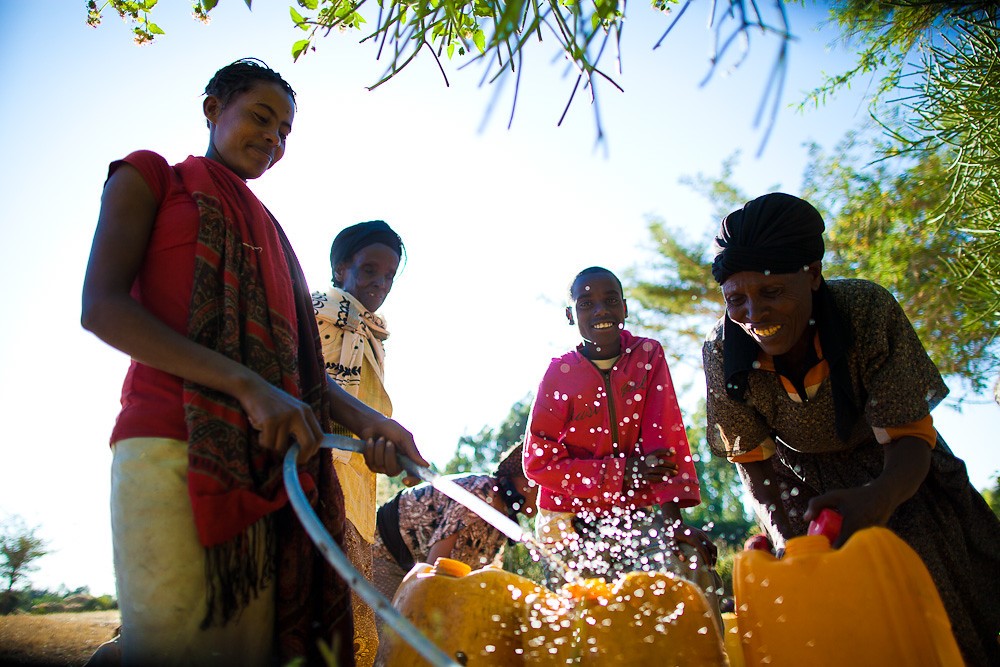 Though ubiquitous in countries like the U.S. and U.K. and easy to ignore, basic sanitation services remain unavailable to more than 1.7 billion people. Without private toilets, almost 500 million of these individuals practice open defecation, going to the bathroom in places like street gutters or into bodies of water.
Though ubiquitous in countries like the U.S. and U.K. and easy to ignore, basic sanitation services remain unavailable to more than 1.7 billion people. Without private toilets, almost 500 million of these individuals practice open defecation, going to the bathroom in places like street gutters or into bodies of water.
Human waste that is not disposed of properly can come into contact with other humans, usually by contaminating drinking water, causing diseases like cholera, dysentery and polio. Poor sanitation causes almost 450,000 deaths each year as a result of diarrhea in addition to contributing to malnutrition. While it is true that the number of people who openly defecate has almost halved in the past two decades, there is still a dire need for sanitation services to become accessible to all.
In fact, even the idea of adequate sanitation services in developed countries is not at all sustainable: it is estimated that 5 billion people will be unable to flush their toilets in the next decade so as to not flood centralized sewer systems.
One invention, the iThrone, is a portable toilet that hopes to provide a solution for the issue of substandard sanitation that persists in the developing world and is encroaching on developed nations.
Background
Diana Yousef is the founder and CEO of change:WATER Labs, a startup launched in 2015 that is focused on inventing and investing in solutions that address the inadequacy of current sanitation standards in many developing countries. The iThrone is the startup’s primary product. Yousef first found inspiration for the iThrone in 2009 while working with NASA to create a water treatment initiative. She wanted to see if the techniques that they conceptualized for the project, an attempt to develop a method of recycling water for space agriculture, could extend to water sustainability in poor countries. Since securing early funding from MIT, change:WATER Labs has received financial support from organizations like the Bill and Melinda Gates Foundation and the UN Development Program.
How It Works
The iThrone is able to circumvent many of the existing barriers to quality sanitation services. Firstly, it does not require any water to function. For communities that face a scarcity of nearby water sources, the iThrone is an invaluable form of sanitation. It can work without water because it operates by dehydrating human waste, which is mostly water, and converting it to water vapor rather than flushing it away into a sewer system.
The little waste that is left over can then be used as fertilizer for farming. Due to this aspect of its design, the iThrone is extremely low-cost and efficient, only needing to be emptied every few weeks rather than every day like other non-flushing toilets.
Even more impressive, four iThrones can be installed for the same price as one communal toilet. As a whole, the iThrone is completely off-grid and needs neither access to plumbing nor power. This means that installation is possible in practically any location, no matter the state of its infrastructure. Due to the simplicity of its construction, it is able to fit in crowded areas, eliminating the need for people to travel long distances just to go to the bathroom. The toilet is also capable of deodorizing deposited human waste by utilizing a biobattery that uses that waste to power a ventilating fan.
Gender Imbalances
Open defecation presents a particular risk to women and young girls, as having to go to the bathroom in the open, and often in remote locations, makes them vulnerable to sexual assault. In order to relieve themselves without attracting the attention of men, some women restrict their water and food intake so that they need to go to the bathroom very late at night or early in the morning. The iThrone’s ability to provide proper sanitation even in crowded locations reduces the risk of sexual violence, providing women and girls with a sense of safety when they are performing one of their most private tasks and allowing them to eat and drink freely.
Open defecation also increases the possibility for women and girls to contract reproductive and urinary infections and also renders the entire process of menstruation frustrating and degrading. Girls in regions without adequate sanitation will often skip school during their period, meaning that they miss weeks of instruction. The iThrone acts as an answer to these problems and effectively supports the health and well-being of women and girls in developing countries.
Future Distribution
Before COVID-19, the iThrone was distributed during its first pilot deployment to a district school and hospital in Uganda. The toilets wound up servicing more than 400 people and received a wholly positive reception from locals. The pandemic unfortunately prevented further distribution from occurring, though the Turkish government expressed interest in purchasing a number of toilets for use in refugee communities in late 2021. The iThrone has also been eyed by construction companies in Central America and Indian companies wanting to test out the toilets in port-a-potties and on transportation and maritime equipment.
Yousef and her team spent the duration of the pandemic refining their product, ensuring that when distribution does restart, the iThrone can help as many people as possible as effectively as possible. Though the iThrone has yet to be fully deployed, it is clear that it represents exactly the kind of innovation that is required to combat global poverty.
– Sofia Oliver
Photo: Unsplash


 Since its conception in August 2018,
Since its conception in August 2018, 

 Worldwide, nearly 2.3 billion people lack access to basic
Worldwide, nearly 2.3 billion people lack access to basic